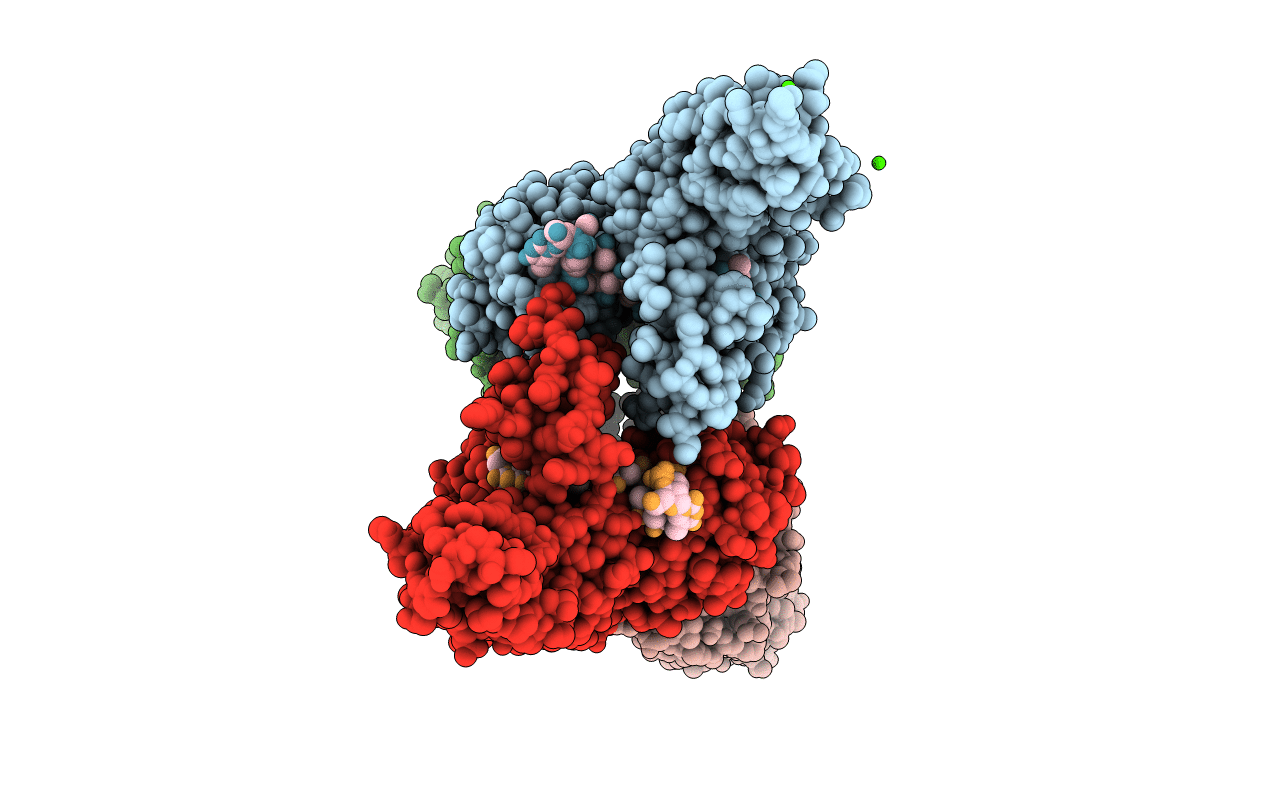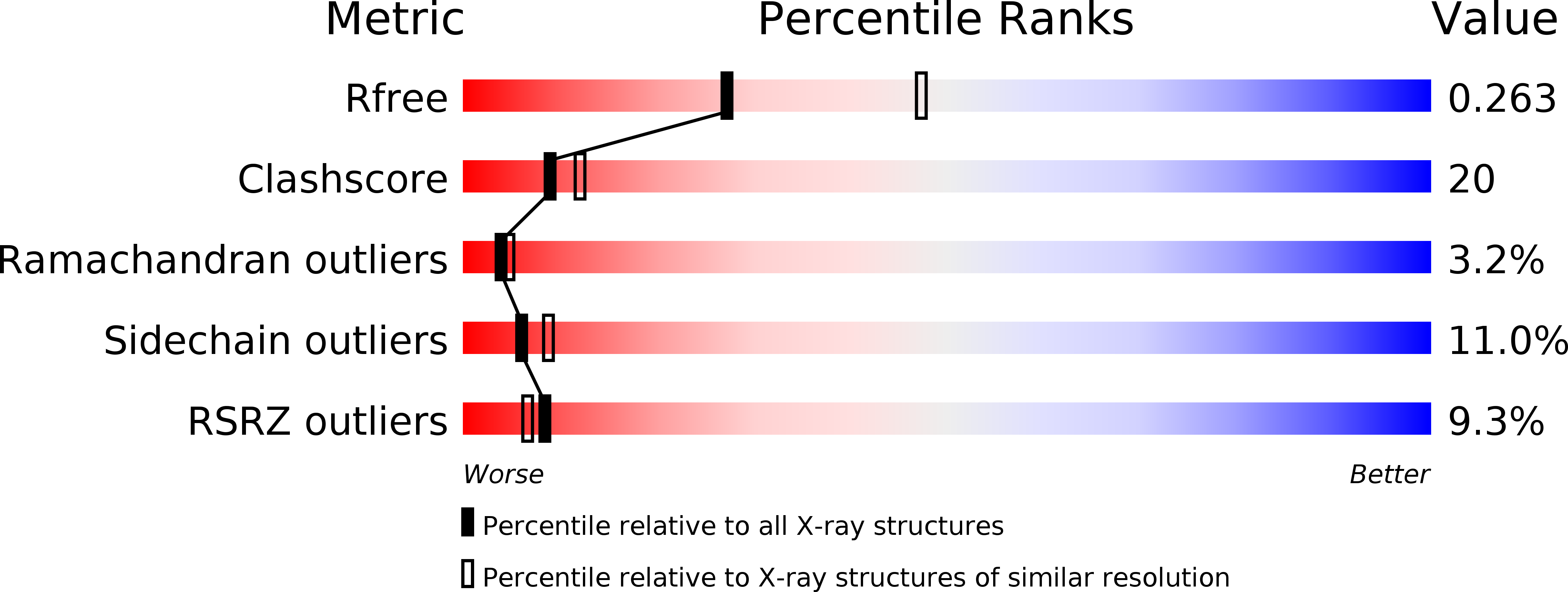
Deposition Date
2013-10-02
Release Date
2014-01-08
Last Version Date
2023-09-20
Entry Detail
PDB ID:
4N0O
Keywords:
Title:
Complex structure of Arterivirus nonstructural protein 10 (helicase) with DNA
Biological Source:
Source Organism:
Equine arteritis virus (Taxon ID: 299386)
Host Organism:
Method Details:
Experimental Method:
Resolution:
2.65 Å
R-Value Free:
0.26
R-Value Work:
0.24
R-Value Observed:
0.24
Space Group:
P 1


